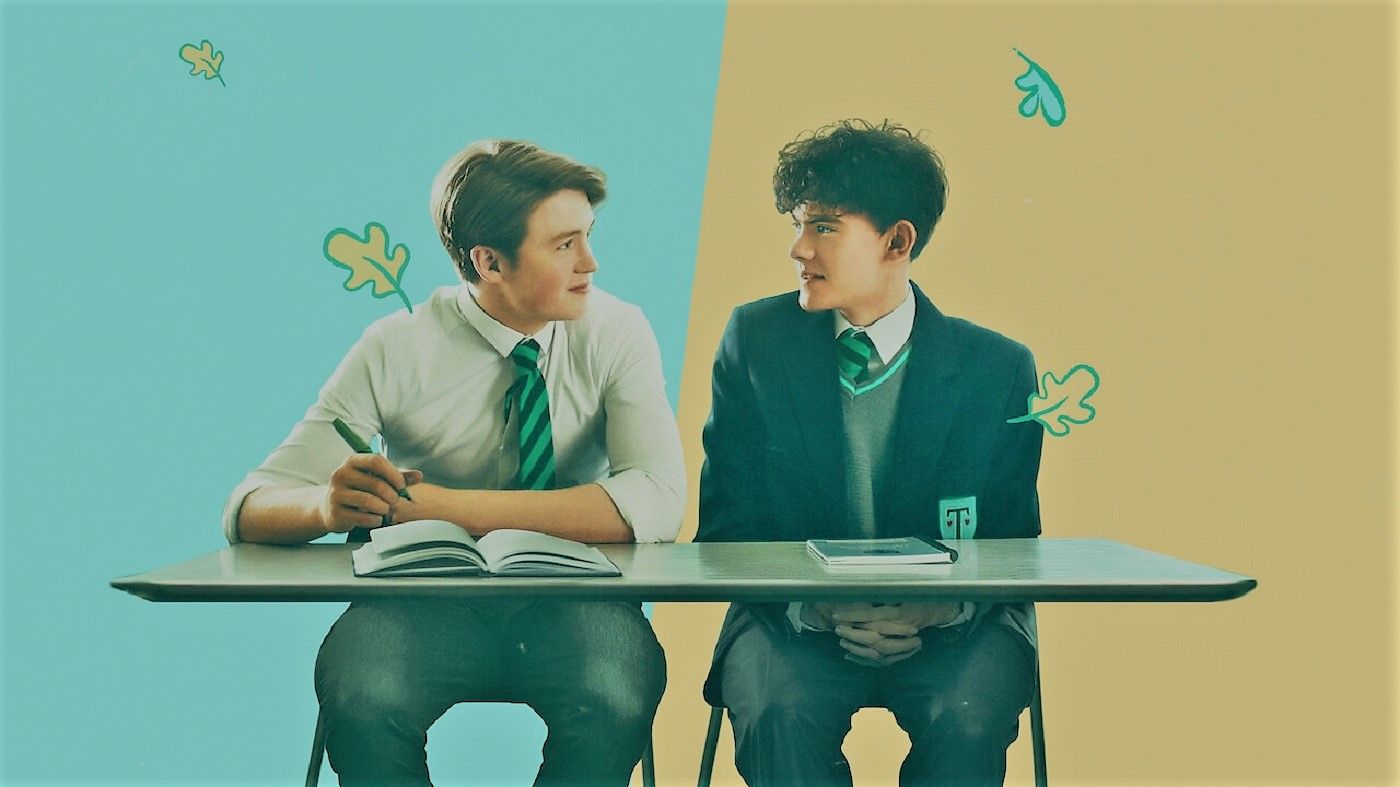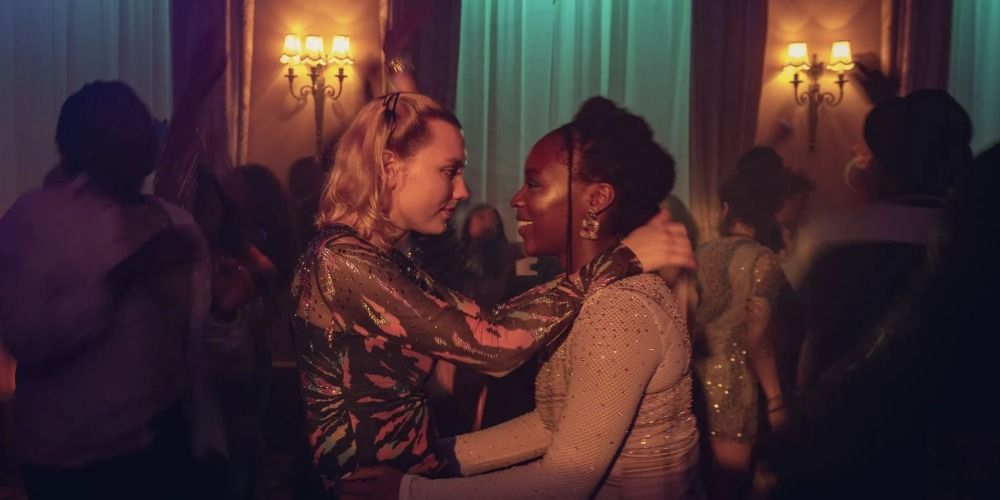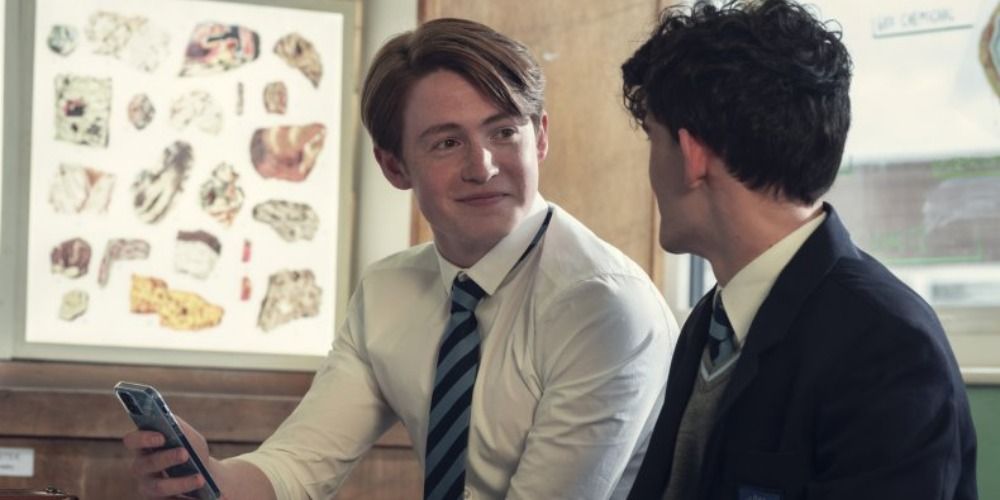Coming out stories are one of the most common queer narratives we see in media. From film to TV to novels, LGBTQ stories are dominated by tales of coming out of the closet and being your authentic self — and rightfully so. Coming out is a quintessential part of the queer experience (whether that be coming out to oneself or to others) so it makes sense that so many of the stories we see being told follow this important part of one’s journey. But it can be tiring to see what essentially feels like the same story being told over and over again.
Heartstopper is a new Netflix series that follows the relationships of a group of high schoolers, centering on a boy named Charlie (Joe Locke) and his crush, Nick (Kit Connor). This show is yet another queer story that places a lot of emphasis on coming out, so it’s understandable that at a certain point queer people want other stories to be told about them, aside from coming out narratives. There has been some criticism that Heartstopper doesn’t really cover any new ground, repeating a similar coming out story to the one we saw in Love, Simon a few years ago, but that’s a reductive look at just how many different kinds of coming out stories are featured in this show. This isn’t simply another story about one person or one couple coming out, it’s a reflection of the true queer experience: coming out never ends.
Charlie Spring has been out of the closet for a year by the time we meet him. He’s gay and everyone knows it. His coming out narrative focuses on him grappling with being bullied for his sexuality and coming to grips with a new crush. Charlie’s narrative highlights how coming out is not the end of his hardships and the strength it takes to be true to yourself in the face of cruelty. It reflects the experience being out and how that changes others' perception of a person.
Elle Argent (Yasmin Finney) has a somewhat similar narrative. She’s also in the aftermath of coming out but for her as a transgender girl, that means she’s in an all-girls school for the first time. Her coming out narrative reflects a specific sense of isolation that one can feel post-coming out, especially when it comes to one’s gender identity trying to find a place in a highly gendered space. Her challenge comes in overcoming this isolation to form new relationships as her authentic self, whether that be making friends at her new school or coming to grips with her feelings for her best friend, Tao (William Gao).
We also get to see the perspective of a couple coming out in Tara (Corinna Brown) and her girlfriend Darcy (Kizzy Edgell). They’ve been a couple since before the start of the show and, about halfway through the season, they decide to make their relationship public. Their story showcases the difficulties that can come even once one is sure of oneself and the challenges that come from being a girl who dates other girls. People are often reductive to their relationship or call them gross for being lesbians. It shows how, for queer people, sharing the happiness of their relationship with the world does not necessarily mean that happiness will be returned. The strain being out can put on a relationship is intense, especially while one is in school. So to see Tara and Darcy’s relationship face this new challenge amidst all these other stories not only rounds out the experiences being reflected but also highlights a side of coming out we see less often.
The closest thing we get to the coming out narrative we’re most familiar with is in Nick Nelson. Nick only starts to realize his identity when he starts to have a crush on Charlie. Over the course of the season, we see him go from fledgling understanding, to secretive research, to dubiously accurate internet quizzes, to grappling with labels, and finally realizing he’s bisexual. His coming out to his mother at the end of the season reflects the traditional last step we often see in these kinds of stories, but because Nick’s narrative is surrounded by so many others it feels less like a definitive end and rather a page turn into a new chapter. Nick’s story may be the most by the books, but it’s an experience that is intimately familiar to many, which can be comforting to see on screen.
Even Ben (Sebastian Croft), the guy who gives Charlie the run-around by using and then dumping him, is grappling with another form of coming out. Being unable to accept himself has made him cruel, and he takes that out on Charlie who’s brave enough to do what he cannot. His coming out narrative is one of repression.
Heartstopper is a reflection on just how many different pieces there are to coming out of the closet. We see this in Charlie’s continued struggles with bullies over a year after coming out, in Darcy and Tara slowly opening up about their relationship, in Elle struggling to find her place in a new school, and in Nick discovering his sexuality. It reflects the experience that people come out multiple times, whether that be to themselves, their friends, or to the world and reflects the different struggles that can come with those different phases. We see people at different levels of comfort with their own identities and through their experiences get reminded that coming out is a very multifaceted thing.
It’s extremely valuable to see a show with this many queer characters, all at different points in their journey. Many stories treat coming out like it’s a one-off thing. You tell the world who you are once, and it listens. But that’s not the case for many people and the process of coming to terms with one’s identity and sharing it with the world is a lot more complicated than simply saying your truth.
Heartstopper reflects the internal and external heartaches that can come from coming out and especially highlights a sense of isolation that one can feel even from one’s friends or other queer people because of this experience. Heartstopper shows us that there are layers to coming out that we don’t explore as much, but that are just as worthy of attention as a grand declaration to the world. Coming out is difficult, and each person faces different challenges with it, so to see even some of the many ways those challenges can manifest presented in a sweet and diverse romance story is refreshing. If we're to keep seeing coming out stories, hopefully writers will take a leaf out of Heartstopper's book and try to reflect just how many different experiences there are out there.





